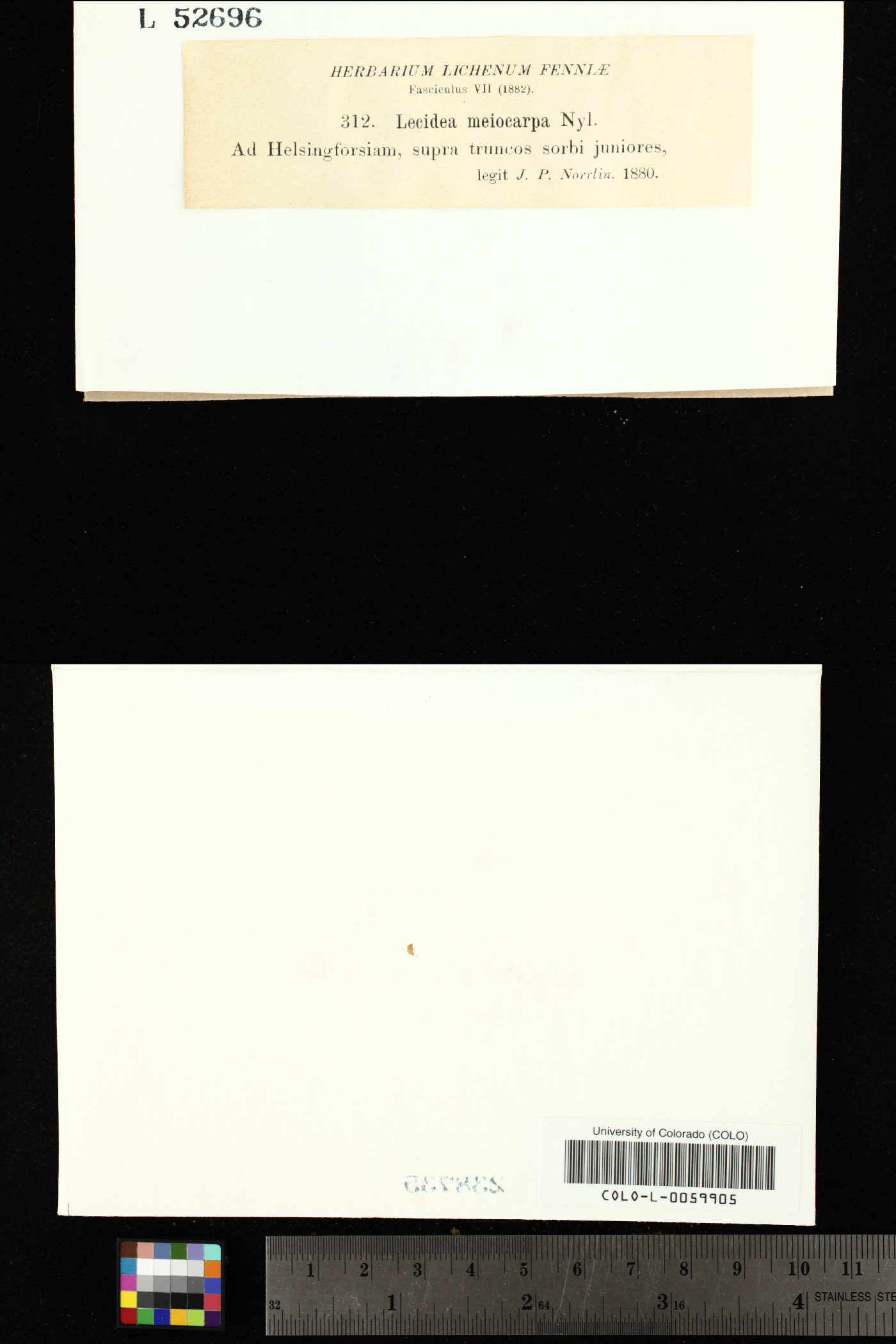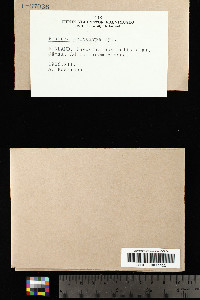
Consortium of Lichen Herbaria
- building a Global Consortium of Bryophytes and Lichens as keystones of cryptobiotic communities -
- Home
- Search
- Images
- Species Checklists
- US States: O-Z >
- US National Parks
- Central America
- South America
- US National Parks
- Southern Subpolar Region
|
|
|
|
Family: Ramalinaceae
[Biatora meiocarpa var. meiocarpa (Nyl.) Arnold, moreLecidea meiocarpa Nyl., Lecidea meiocarpa subsp. meiocarpa Nyl., Lecidea meiocarpa var. meiocarpa Nyl., Lecidea minuta (Schaer.) Nyl.] |
Nash, T.H., Ryan, B.D., Gries, C., Bungartz, F., (eds.) 2004. Lichen Flora of the Greater Sonoran Desert Region. Vol 2. Thallus: rimose-areolate or in parts endosubstratal areoles: irregular in outline, mostly confluent, 0.1-0.3 mm in diam., weakly convex surface: light beige to grayish green, dull, esorediate upper cortex: poorly developed, 5-20 µm thick; algal layer: 45-100 µm high; medulla: lacking Apothecia: rounded to deformed or tuberculate, sessile with a constricted base, 0.2-0.5(-0.7) mm in diam. margin: usually weakly prominent when young, excluded in old apothecia, slightly glossy disc: orange brown, dull, epruinose, flat to moderately, rarely strongly convex exciple: laterally 20-60 µm, basally 35-65 µm wide, composed of radiating hyphae with lumina 1.5-3.5 µm, apically 1.5-6.0 µm wide; epihymenium: lacking hymenium: hyaline to pale golden brown, 40-55 µm high; paraphyses: simple, hyaline, lumina 0.7-1.2 µm, apically 1.5-6.5 µm wide; subhymenium: 20-60 µm high; hypothecium: hyaline, 35120 µm high asci: clavate, 8-spored ascospores: hyaline, simple, rarely 1-septate, (7.5-)9.8-13.3(-16) x (3-)3.2-4.1(5) µm Pycnidia: globular, semi-immersed, c. 100 µm in diam.; wall: hyaline to pale brown conidia: broadly filiform, 25-35(-45) x 1-1.8 µm Spot tests: thallus K-, C+ red, KC+ red, P- Secondary metabolites: none detected Substrate and ecology: usually on bark of shrubs or deciduous trees in boreal climates, the Sonoran specimens are from bark of Abies lasiocarpa World distribution: northern Europe, the Caucasuses, and North America Sonoran distribution: Arizona, Mt. Baldy Wilderness, at 2800-3000 m. Notes: Biatora meiocarpa is part of a complex of poorly understood species. In northwestern North America the chemically distinct (xanthones) B. meiocarpa var. tacomensis occurs. The arctic-alpine B. subduplex can be very similar in appearance, but is distinguished by paraphyses and excipular hyphae that are not markedly swollen apically. Within the Sonoran Desert Region B. meiocarpa cannot be confused with any other species. |
Powered by Symbiota











